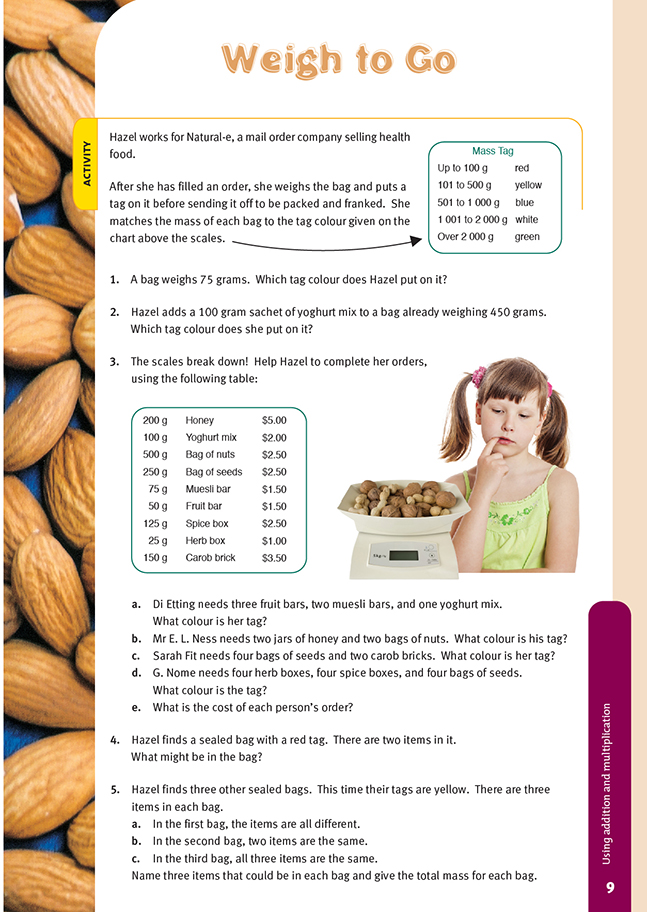This is a level 2 number link activity from the Figure It Out series. It relates to Stage 5 of the Number Framework.
A PDF of the student activity is included.
Click on the image to enlarge it. Click again to close. Download PDF (202 KB)
solve addition money problems
FIO, Link, Number, Book One, Weigh to Go, page 9
This activity uses the measurement of mass as a context for number problems. You can integrate number more fully by having your students act out the scenario. They could estimate the mass of a variety of objects and match each object to a red, yellow, blue, white, or green tag. The students could then weigh each object
to check their estimations and tag selections.
You would need to organise the objects to be weighed beforehand and label them with numbers or letters so that they are easily distinguished during discussion. Objects to be weighed could include plastic bags of beans, old socks with stones in them, or plastic bottles of water. You could choose objects that do not need to be in containers, but you would need to use sensible things that could be weighed easily on kitchen scales or in a bucket balance.
When introducing question 4, ask a question such as “Can the two items be less than 100 grams in total?” to explore the logical implications here. It may be helpful for both questions 4 and 5 to have the students reorganise the list of health food orders in descending order of mass. Putting the items on a spreadsheet would present them with the opportunity to appreciate the “sort a list” function.
Answers to Activity
1. red
2. blue
3. a. yellow
b. white
c. white
d. white
e. Di Etting: $9.50; Mr E. L. Ness: $15; Sarah Fit: $17; G. Nome: $24
4. Answers will be one of:
• two fruit bars
• one herb box, one muesli bar
• one herb box, one fruit bar
• two herb boxes.
5. a. Answers will vary. For example:
• honey, yoghurt mix, muesli bar (375 g)
• yoghurt mix, muesli bar, fruit bar (225 g)
• muesli bar, spice box, fruit bar (250 g).
b. Answers will vary. For example:
• two honey, one herb box (425 g)
• two yoghurt mixes, one carob brick (350 g)
• two carob bricks, one muesli bar (375 g).
c. Answers will be one of:
• three carob bricks (450 g)
• three spice boxes (375 g)
• three yoghurt mixes (300 g)
• three muesli bars (225 g)
• three fruit bars (150 g).
